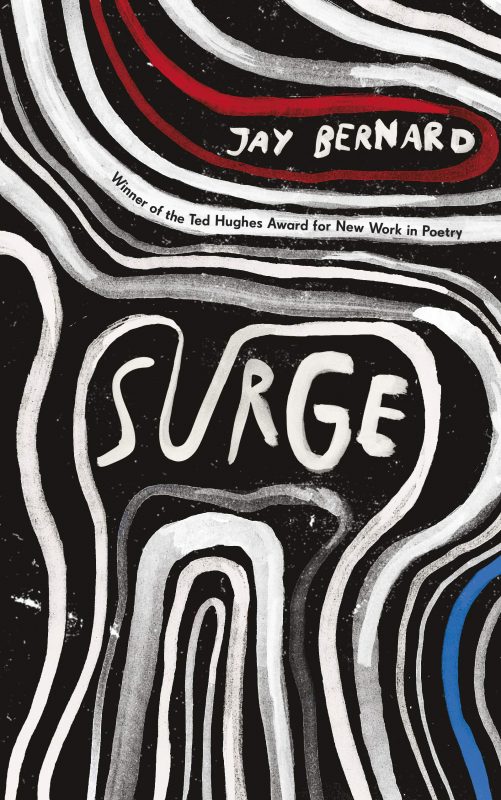REVIEW: JAY BERNARD’S SURGE’
Reviewed by Stella Backhouse

“remember we were brought here from the clear waters of our dreams/that we might be named, numbered and forgotten”: the first line as headlong as a laughing stream; the second as emphatic as heavy blows deliberately dealt; the counterpoising of ‘remember’ and ‘forgotten’ at either end, a word of comfort flipped to its antithesis in just twenty-seven syllables. The question posed by Jay Bernard’s humbling 2019 collection Surge is encapsulated in microcosm right here in its searingly angry opening lines: if the process of recording is itself a forgetting, how can we ever remember?
The collection’s starting point is the New Cross Fire of 1981. As Bernard explains in a prefatory Author’s Note, this broke out at 439 New Cross Road in south-east London in the early hours of 18th January 1981. Thirteen young black people who were celebrating at a birthday party were killed and twenty-seven others were injured. Additionally, one of the survivors took his own life eighteen months later, apparently because of persistent trauma triggered by events on the night.
How the fire began has never been established; while it may have been accidental, it is known that racist groups were operating in the area at the time, and from the start there were accusations of police intimidation, cover-up and coercion. Six weeks after it happened, a Black People’s Day of Action march from Lewisham to Hyde Park was disrupted by police and abused by the press. The rallying cry ‘13 Dead, Nothing Said’ dates from this time. Although Bernard nowhere quotes these words directly, the silence and the lack of closure they imply hover above the collection, defying established narratives, blurring boundaries and creating unresolved spaces where the dead still live, moving through the poetry as the poetry moves through them.
In ‘Duppy’, for example, a ghost watches the Day of Action march while “eat[ing] a petal from the bouquet shaped like my name/The crowd passes through me”. In ‘Ark’ the poet disinters from the archives a time capsule of testament, documentary records and campaign material relating to the New Cross Massacre Action Committee, set up in the wake of the tragedy. The physical remains of its pre-digital DIY industry, the once-frenetic urgency to speak its truth, are slowly sinking into decay; despite conventional attempts to fix and frame it, the dissipated energy cannot be recaptured: “[I] date it by the flaking Letraset and amber glue,/press each part to the flatbed scanner,/wonder which words to file/the damp smoke and young bones under.”
And then the past rises again: the Grenfell Fire of 2017 happened while Bernard was researching New Cross. The loss of seventy-two mostly poor, non-white lives was again met by those in authority with buck-passing and denial. In ‘Ark II’, as a spontaneous shrine springs up in an underpass, the poet witnesses at first hand the creation of what might become an archive of the future. But alongside the slightly guilty artistic instinct to preserve and interpret these deeply personal memorials, again comes the sense of something beyond, something resistant to capture: “in the story I am trying to tell/what doesn’t fit is part of the hole”.
This ambiguity and fluidity is replicated in the person of the poet. Jay Bernard identifies as trans and gender non-conforming and uses the pronouns they/them. Away from the fire poems, ‘Peg’ (“Tonight we are boys together”) sits teasingly next to ‘Pride’ (“Two dykes smiling like young mothers ask me my name./Our gazes lock on love”). But in reclaiming this formless, intersectional “dark between two bodies”, Bernard paradoxically experiences an affirmation of self, and the beginnings of a new identity born from their relationship to New Cross: “I am from here, I am specific to this place, I am haunted by this history but I also haunt it back” (from Author’s Note).
Surge is about more than simply uncovering a hidden past or creating alternative history. Like Lily Jones’ cover art, which has about it something of Edvard Munch’s best-known painting, it is the place of the sound made by the sound of the silent scream; the place of the sound made by the sound of nothing said; the place where the dead speak, and the living have no words.
Surge is available for purchase online from various online retailers.
